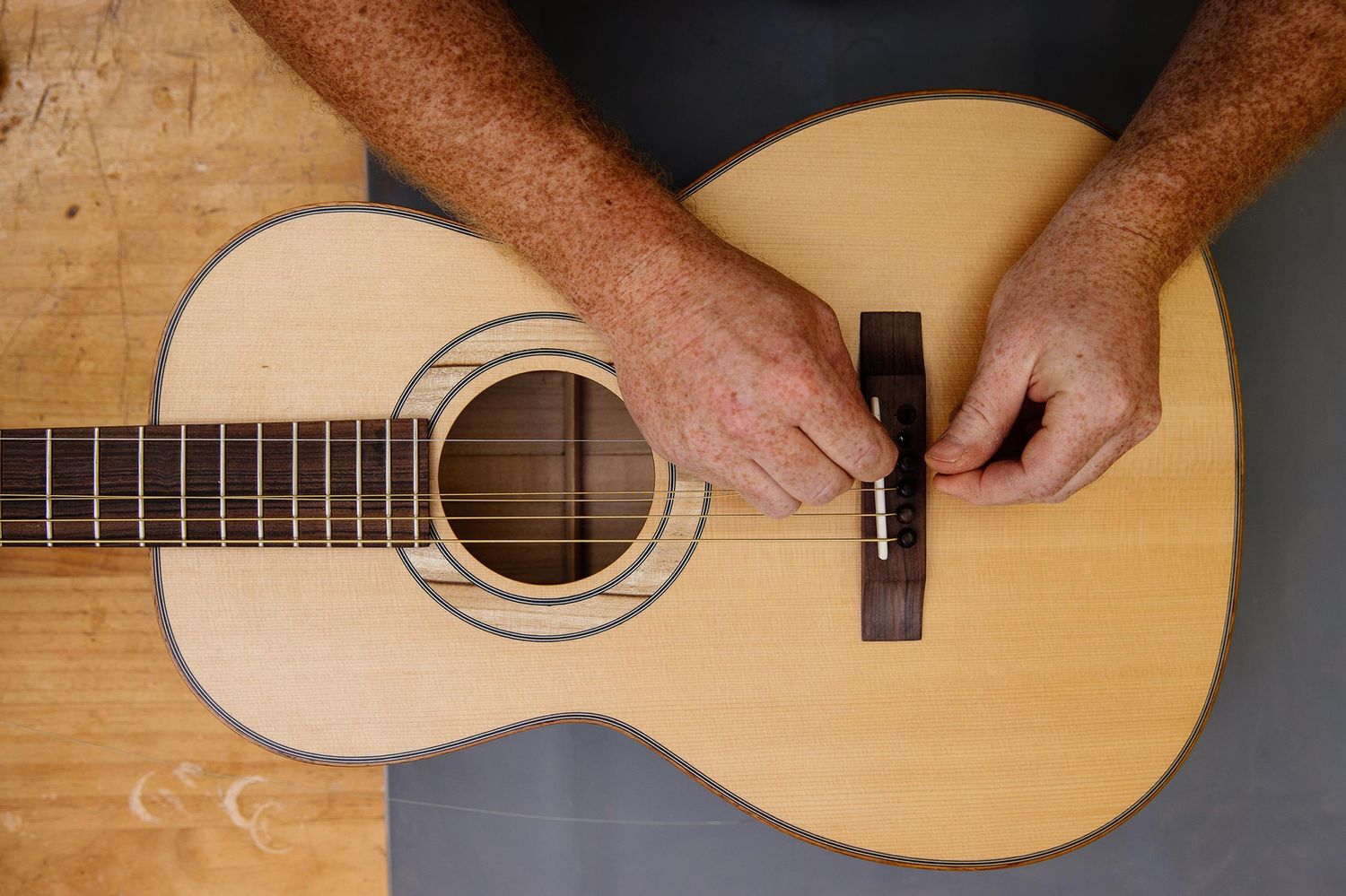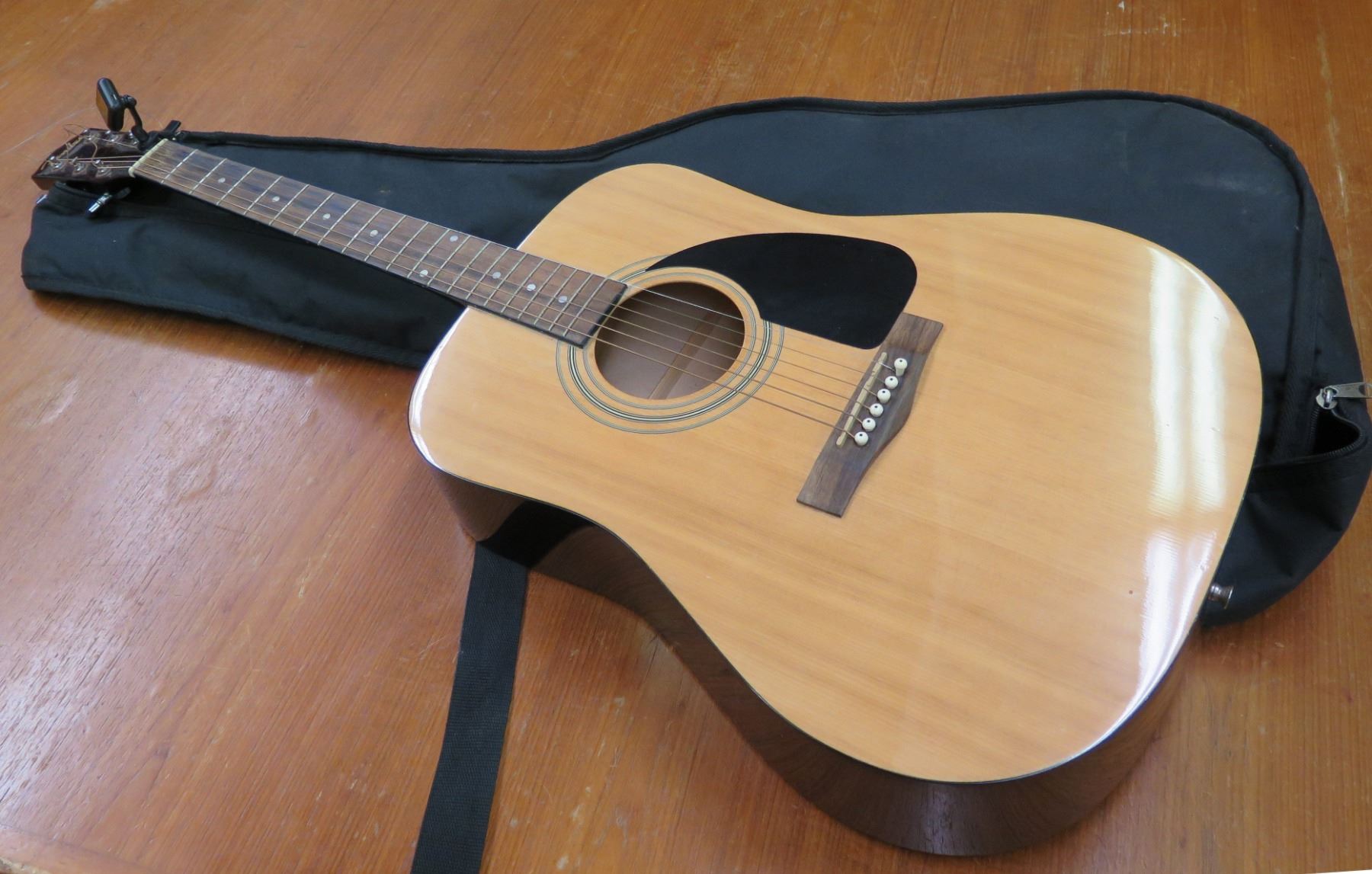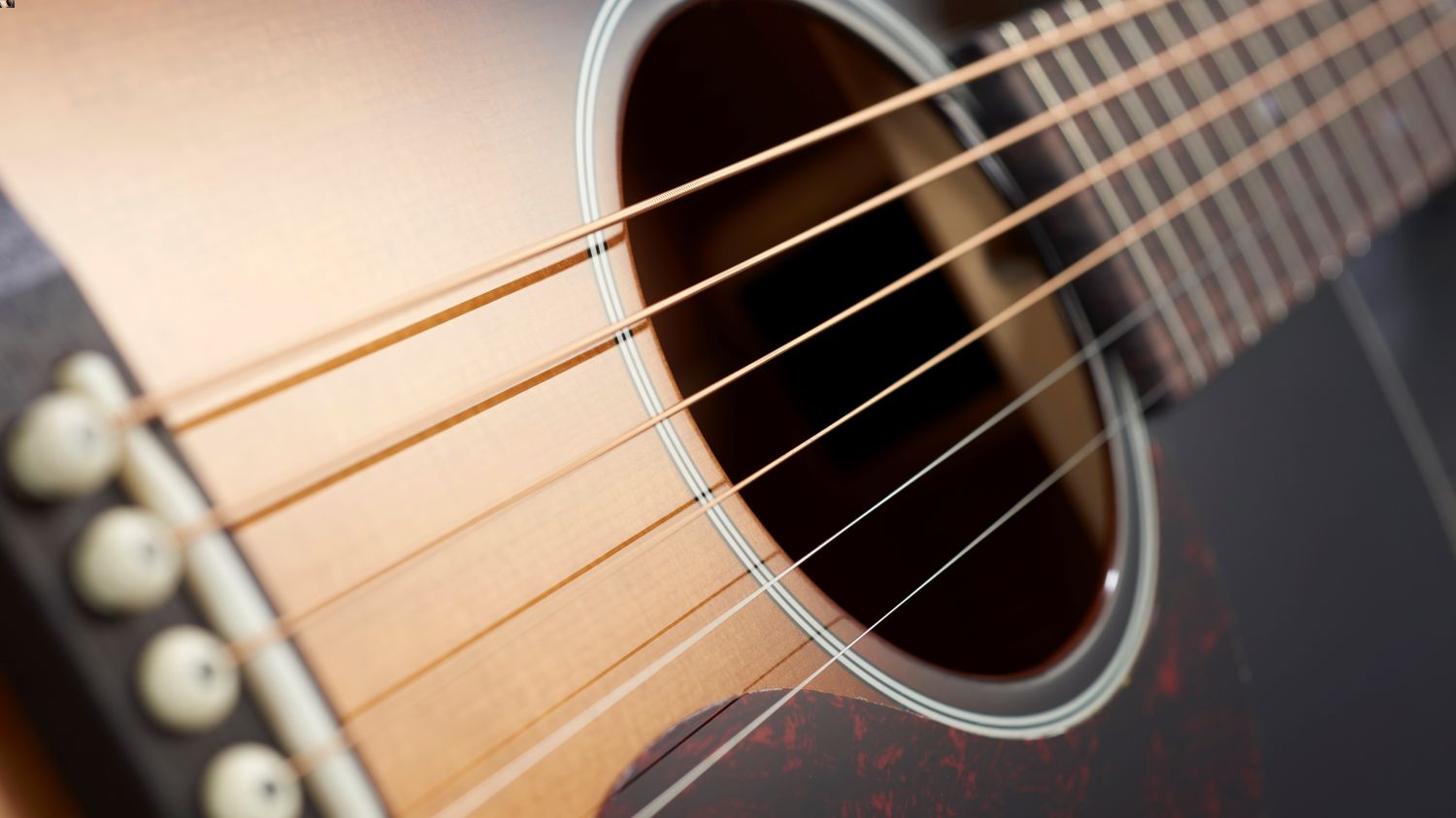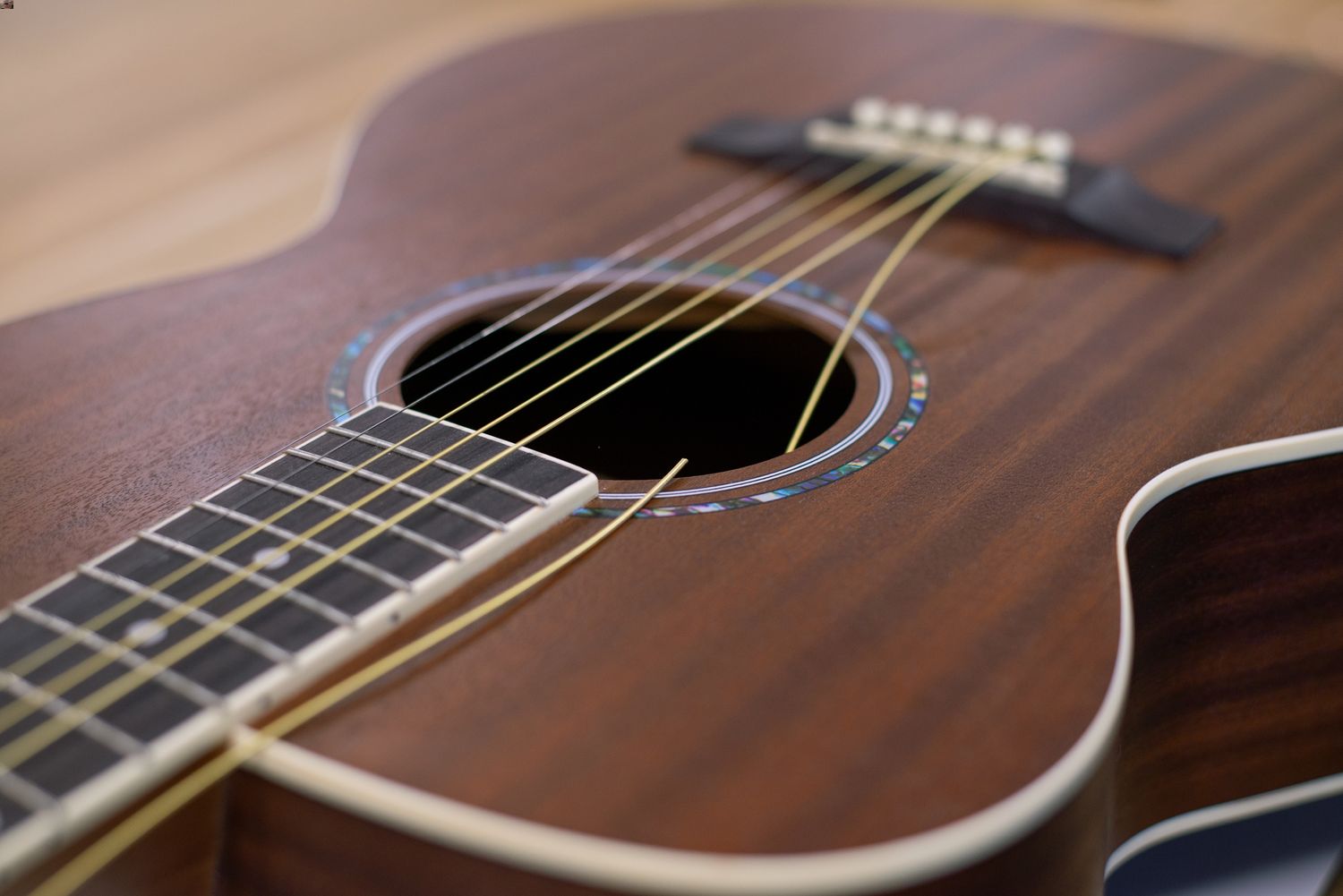Home>Production & Technology>Acoustic>How To Wind Acoustic Guitar Strings


Acoustic
How To Wind Acoustic Guitar Strings
Published: March 10, 2024
Learn how to wind acoustic guitar strings properly for optimal sound and performance. Follow our step-by-step guide to restringing your acoustic guitar.
(Many of the links in this article redirect to a specific reviewed product. Your purchase of these products through affiliate links helps to generate commission for AudioLover.com, at no extra cost. Learn more)
Table of Contents
Introduction
Properly winding acoustic guitar strings is a crucial aspect of maintaining the instrument's playability and sound quality. Whether you're a seasoned musician or a beginner, understanding the importance of correctly winding your guitar strings is essential for achieving optimal performance and longevity from your instrument.
When it comes to the acoustic guitar, the strings are the heart and soul of the instrument. They are responsible for producing the rich, resonant tones that captivate audiences and inspire musicians. However, even the highest quality strings can fall short of their potential if they are not wound properly.
In this comprehensive guide, we will delve into the art of winding acoustic guitar strings with precision and care. From the tools and materials needed to the step-by-step process of winding the strings, we will cover everything you need to know to ensure that your acoustic guitar performs at its best.
By mastering the technique of winding acoustic guitar strings, you can elevate your playing experience and unlock the full sonic potential of your instrument. So, let's embark on this journey together and discover the art of string winding, a fundamental skill that will enhance your musical expression and bring out the best in your acoustic guitar.
Why it's important to wind acoustic guitar strings properly
Properly winding acoustic guitar strings is a critical aspect of maintaining the instrument's playability and sound quality. The way the strings are wound not only affects the tuning stability but also impacts the overall tone and resonance of the guitar. Here are several reasons why it's crucial to wind acoustic guitar strings properly:
-
Tuning Stability: When strings are wound improperly, they are prone to slipping and losing tension, leading to frequent tuning issues. Proper winding ensures that the strings stay securely in place, reducing the need for constant adjustments and allowing for more consistent tuning stability during practice sessions and performances.
-
Tone and Resonance: The way the strings are wound can significantly influence the tone and resonance of the guitar. Proper winding ensures that the strings make optimal contact with the bridge and nut, allowing for better transfer of vibrations and producing a fuller, more vibrant sound. This attention to detail can make a noticeable difference in the overall quality of the guitar's tone.
-
String Longevity: Well-wound strings are less likely to develop kinks or weak spots, which can lead to premature breakage. By winding the strings properly, you can extend their lifespan and reduce the frequency of string replacements, saving time and money in the long run.
-
Playability: Properly wound strings contribute to a smoother playing experience. When the strings are secured and aligned correctly, they are less likely to snag or create friction against the frets, allowing for effortless string bending and fretting. This enhances the overall playability of the guitar, making it more enjoyable to play and explore different musical techniques.
-
Aesthetics: Beyond the functional benefits, well-wound strings also contribute to the visual appeal of the guitar. Neatly wound strings not only convey a sense of professionalism and attention to detail but also add to the overall aesthetic appeal of the instrument.
In essence, the proper winding of acoustic guitar strings is not merely a technicality; it is a fundamental aspect of maintaining the instrument's performance, playability, and sonic characteristics. By understanding the significance of this seemingly simple task, guitarists can elevate their playing experience and ensure that their instrument consistently delivers its full potential.
Tools and materials needed
When it comes to winding acoustic guitar strings, having the right tools and materials at your disposal is essential for achieving optimal results. Here's a comprehensive list of what you'll need to ensure a smooth and successful string winding process:
-
Quality Guitar Strings: Begin with a fresh set of high-quality acoustic guitar strings. Whether you prefer phosphor bronze, 80/20 bronze, or another type of string material, ensure that they are suitable for your playing style and guitar model.
-
String Winder: A string winder is a handy tool that significantly speeds up the process of winding the strings. It features a crank and a notch for removing bridge pins, allowing for quick and efficient string changes.
-
Wire Cutters: Precision wire cutters are essential for trimming the excess string length after winding. This ensures a clean and professional appearance while preventing any sharp ends from protruding and causing discomfort during play.
-
Tuner: A reliable tuner is indispensable for accurately tuning the guitar after restringing. Whether you prefer a clip-on tuner, pedal tuner, or smartphone app, having a tuner on hand is crucial for achieving precise tuning.
-
Soft Cloth: Keeping a soft cloth nearby is useful for wiping down the guitar and removing any accumulated dust or debris from the fretboard and body before restringing.
-
String Lubricant: While not mandatory, a small amount of string lubricant can be beneficial for reducing friction at the nut and bridge, promoting smoother tuning stability and prolonging the life of the strings.
-
Workbench or Stable Surface: Having a stable and well-lit work area is essential for comfortably restringing the guitar. A workbench, table, or any flat surface with ample space will provide a suitable setting for the string winding process.
-
Patience and Attention to Detail: While not tangible tools, patience and attention to detail are invaluable for achieving precise and consistent string winding. Taking the time to carefully wind each string will yield optimal results in terms of tuning stability and overall playability.
By ensuring that you have these tools and materials readily available, you can approach the process of winding acoustic guitar strings with confidence and efficiency, setting the stage for an enjoyable and rewarding restringing experience.
Step-by-step guide to winding acoustic guitar strings
-
Prepare the Guitar: Begin by laying the guitar on a stable surface, ensuring that it is well-supported and positioned comfortably for restringing. Use a soft cloth to wipe down the fretboard and body, removing any accumulated dust or debris.
-
Remove the Old Strings: Starting with the low E string, use the string winder to loosen the tension and unwind the string from the tuning peg. Once the string is free, carefully remove it from the bridge and repeat this process for the remaining strings.
-
Clean the Guitar: With all the old strings removed, take the opportunity to clean the fretboard and body of the guitar using a soft cloth. This ensures that the guitar is free from any residual dirt or grime before installing the new strings.
-
Insert the New Strings: Begin by inserting the ball end of the first string into the bridge, ensuring that it is securely seated. Then, guide the opposite end of the string through the corresponding tuning peg, leaving a few inches of slack to work with.
-
Secure the String: Holding the string taut, use the string winder to start winding the string onto the tuning peg. Ensure that the string wraps neatly and evenly around the peg, with each coil lying adjacent to the previous one.
-
Maintain Tension and Alignment: As you continue winding the string, maintain gentle tension to keep the coils snug against the tuning peg. This helps prevent slippage and ensures that the string remains securely in place. Additionally, ensure that the string remains aligned within the nut and bridge slots as you wind it.
-
Trim Excess String: Once the string is securely wound and tuned to pitch, use wire cutters to trim the excess length, leaving a small amount of slack to prevent the string from unraveling.
-
Repeat the Process: Follow the same process for each remaining string, ensuring that they are inserted, wound, and trimmed with precision and care.
-
Stretch and Tune the Strings: After all the strings are installed, gently stretch and flex each string to help seat them and minimize tuning instability. Then, use a tuner to bring each string to its proper pitch, making any necessary adjustments to achieve accurate tuning.
-
Final Inspection: Once all the strings are installed, trimmed, and tuned, visually inspect each one to ensure that they are neatly wound, properly aligned, and securely seated at the bridge and tuning pegs.
By following this step-by-step guide with attention to detail and precision, you can effectively wind acoustic guitar strings, ensuring optimal playability, tuning stability, and overall performance from your instrument.
Tips for maintaining properly wound strings
Maintaining properly wound strings is essential for preserving the playability, tone, and longevity of your acoustic guitar. Here are some valuable tips to help you keep your strings in optimal condition:
-
Regular Cleaning: After playing, wipe down your strings with a soft cloth to remove sweat, oils, and debris. This simple practice can prevent the buildup of grime and extend the life of your strings.
-
String Lubrication: Consider using a small amount of string lubricant at the nut and bridge to reduce friction and wear on the strings. This can enhance tuning stability and prolong the lifespan of the strings.
-
Gentle String Stretching: When installing new strings or after restringing, gently stretch and flex each string to help them settle and stabilize. This can minimize tuning instability and improve the overall performance of the strings.
-
Avoid Excessive Bending: While string bending is a common technique in guitar playing, excessive and aggressive bending can put undue stress on the wound portion of the strings, leading to premature wear and potential breakage. Practice string bending with moderation to preserve the integrity of the strings.
-
Proper Storage: When not in use, store your guitar in a controlled environment with stable temperature and humidity levels. Extreme fluctuations in environmental conditions can accelerate string corrosion and degradation.
-
Regular Inspections: Periodically inspect the wound portion of the strings for signs of wear, corrosion, or kinks. Address any issues promptly by replacing worn strings to maintain consistent tone and playability.
-
Mindful Playing Technique: Be mindful of your playing technique to minimize unnecessary wear on the strings. Avoid excessive force when fretting and strumming, as this can contribute to premature string wear and breakage.
-
String Changing Frequency: While it's essential to maintain properly wound strings, it's also important to know when to change them. Regular playing, exposure to sweat, and environmental factors can degrade strings over time. Consider changing your strings at appropriate intervals to ensure optimal performance.
By incorporating these tips into your string maintenance routine, you can prolong the life of your acoustic guitar strings, maintain consistent tone and playability, and ensure that your instrument continues to inspire and delight you with its rich, resonant sound.
Conclusion
In conclusion, mastering the art of winding acoustic guitar strings is a fundamental skill that directly impacts the playability, tone, and longevity of the instrument. By understanding the significance of proper string winding and following the step-by-step guide outlined in this article, guitarists can elevate their playing experience and ensure that their acoustic guitar consistently delivers its full sonic potential.
The process of winding acoustic guitar strings is not merely a technical task; it is an opportunity for guitarists to connect with their instrument on a deeper level. It involves attention to detail, patience, and a commitment to achieving optimal performance. As each string is carefully wound and tuned, a harmonious relationship is established between the musician and the instrument, setting the stage for musical expression and creativity to flourish.
By winding the strings properly, guitarists can enjoy enhanced tuning stability, improved tone and resonance, and a smoother playing experience. The meticulous attention given to each coil of the string reflects a dedication to craftsmanship and a desire to unlock the true potential of the acoustic guitar.
Furthermore, maintaining properly wound strings through regular cleaning, gentle stretching, and mindful playing techniques is essential for preserving the integrity and performance of the strings. By incorporating these maintenance practices into their routine, guitarists can prolong the life of their strings and ensure that their instrument continues to inspire and delight them with its rich, resonant sound.
Ultimately, the art of winding acoustic guitar strings is a timeless tradition that embodies the essence of musical craftsmanship and dedication. It is a ritual that connects musicians to the heritage of the instrument and empowers them to create beautiful melodies and captivating performances. As guitarists embark on their musical journey, the knowledge and skill of properly winding acoustic guitar strings will serve as a cornerstone of their musical expression, allowing them to unleash the full potential of their instrument and share their passion for music with the world.











